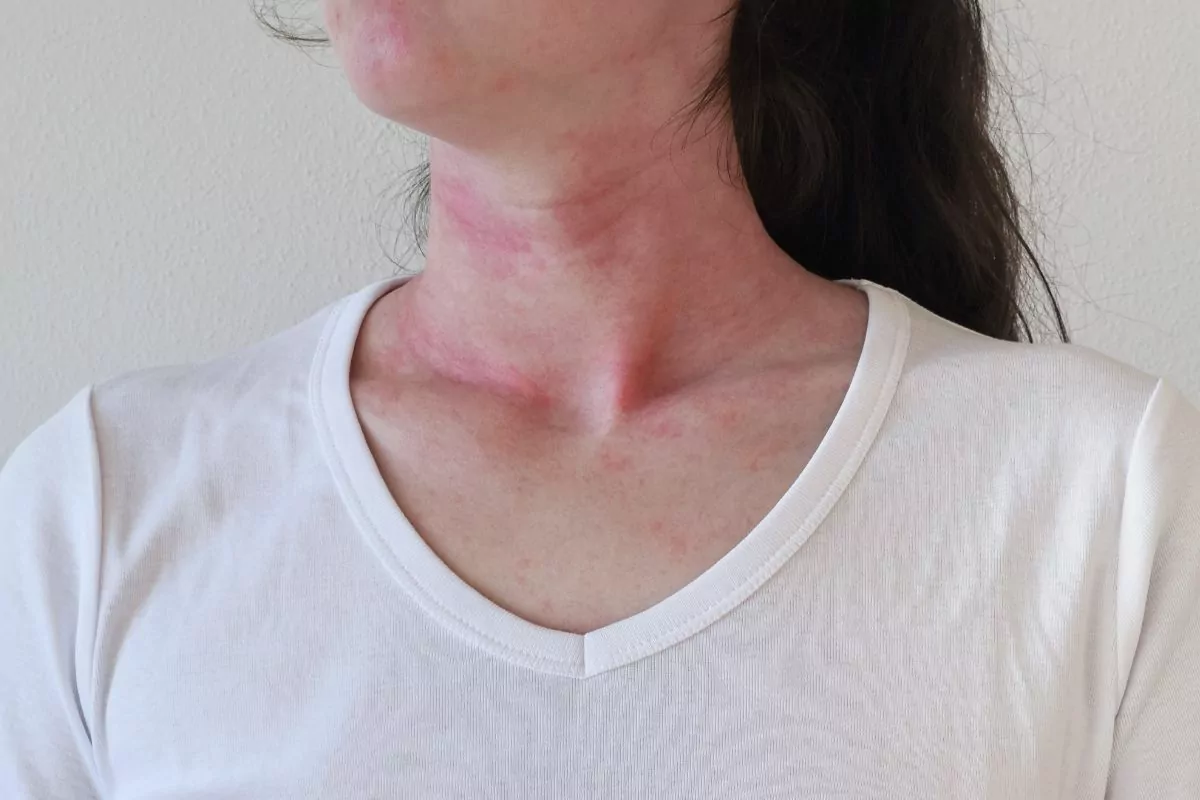Have you ever come across mold growth on cork? It’s not an uncommon occurrence, but have you wondered about the potential dangers it poses?

In this article, we’ll delve into the world of mold on cork and explore just how hazardous it can be. So, let’s grab a cup of tea and uncover the truth about mold on cork!
What Is Mold?
Mold is a common type of fungi that thrives in damp environments. It’s those fuzzy patches or discoloration you might notice on surfaces like cork.
Mold spreads through tiny airborne spores, and when they find a cozy spot with moisture, they settle in and start multiplying.
As for the color, mold comes in various hues, including green, black, or even pink. While some molds are harmless, others can pose health risks.
That’s why it’s crucial to understand the conditions that encourage its growth and the types of mold you might encounter.
Conditions That Promote Mold Growth On Cork
Mold is a sneaky organism that requires specific conditions to call cork its home. Moisture is its best friend, so any environment with excess humidity or water damage becomes a mold paradise.
Cork, being a porous material, easily absorbs moisture, especially in humid climates or areas prone to water leaks.
Lack of ventilation and dark spaces can also contribute to mold growth. So, if you have cork items stored in damp or poorly ventilated areas, be on the lookout for potential mold issues.
Common Types Of Mold Found On Cork
When it comes to mold on cork, there are a few usual suspects you may encounter. Cladosporium, often green or black in appearance, is one of the most common molds found on cork.
Aspergillus, with its powdery texture, is another frequent visitor. Alternaria, known for its dark color and velvety texture, may also make an appearance.
Keep in mind that these are just a few examples, as mold can manifest in various forms, so identifying the type of mold on your cork can help determine the potential risks associated with it.
Health Risks Associated With Mold On Cork
Being aware of these health risks underscores the importance of addressing mold on cork promptly and taking preventive measures to ensure a safe and healthy environment, so let’s see what those are:
Allergic Reactions

Mold on cork can trigger allergic reactions in sensitive individuals. If you find yourself sneezing, experiencing nasal congestion, or developing itchy eyes and skin after being around moldy cork, you might have an allergic response.
Respiratory Problems: Asthma And Mold Exposure
For individuals with asthma, exposure to mold on cork can exacerbate their symptoms. Mold spores, when inhaled, can irritate the airways, leading to wheezing, coughing, shortness of breath, and chest tightness.
Those with asthma should be particularly cautious around moldy cork and ensure they have proper asthma management strategies in place.
Mold-Related Respiratory Illnesses
Prolonged exposure to mold on cork can also increase the risk of developing respiratory illnesses, including respiratory infections, bronchitis, and even fungal lung infections in severe cases.
Other Potential Health Concerns
Mycotoxins And Their Impact
Certain types of mold on cork produce mycotoxins, which are toxic substances that can have adverse effects on human health.
Prolonged exposure to mycotoxins can lead to a range of symptoms, including headaches, dizziness, fatigue, and even neurological issues, and while the presence of mycotoxins is less common, it highlights the importance of addressing mold issues promptly and taking necessary precautions.
Long-Term Exposure Risks
Finally, long-term exposure to mold on cork can have cumulative effects on health, with chronic respiratory issues, persistent allergic reactions, and compromised immune responses being among the risks associated with prolonged exposure.
How To Assess The Potential Danger
By combining the following simple steps, you’ll have a better understanding of the potential risks associated with mold on cork:
- Take a good look: Give the cork a thorough visual inspection. Check for visible mold growth, noting the size, color, and extent of coverage.
- Follow your nose: Give it a sniff! Mold often has a distinct musty odor. If you catch a whiff of something funky near the cork, it could be a sign of a significant mold issue.
- Listen to your body: Pay attention to any symptoms or allergic reactions you or others may be experiencing when near the moldy cork. If you notice sneezing, coughing, or itchy eyes, it’s time to take the potential danger seriously.
The Bottom Line
Remember, mold on cork isn’t just a cosmetic issue; it can impact your health. By being vigilant, assessing the severity, and considering individual susceptibility, you can better understand the potential risks involved.
So, let’s prioritize our well-being and take proactive measures to prevent and address mold on cork promptly. Here’s to a mold-free and healthy environment for all! Stay cozy and take care!
- Why Does Wine Taste Better With Age? - June 14, 2023
- What Does It Mean When A Bottle Of Wine Is Corked? - June 14, 2023
- Wine Fridge Vs Wine Cellar – Which One Should You Choose? - June 14, 2023
